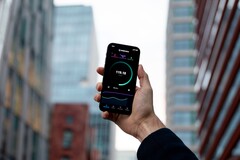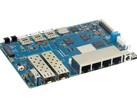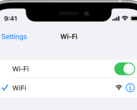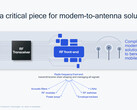The Samsung Galaxy S9 Plus launched in 2018 as one of the very first phones capable of delivering above-gigabit cellular connection speeds. (Up to 1.2 Gbit/s, to be exact.) It's been more than five years since that memorable event, and it's only natural that the industry used the time wisely. We now have the Qualcomm X75 5G modem that promises download speeds of up to 10 Gbit/s and upload speeds of up to 3.5 Gbit/s. Most, if not all phones built around the Snapdragon 8 Gen 3 chip that launched just a few days ago will feature the X75.
10 Gbits per second and even 3 Gbits per second are a fine achievement to brag about. Unfortunately, no user will be able to experience those outstanding numbers firsthand any time soon. The average downstream 5G connection speed in Germany is well below 200 Mbits/s, according to OOKLA; it is not much better in the USA, seemingly. Worse still, present-day 5G networks can be a little unreliable, with connection speed drops to under 1 Mbit/s happening way more often than they have any right to.
To be clear, a stable 6 Mbit connection will let one watch 1080p60 YouTube videos without any issues, so figures like 100 Mbits or 180 Mbits are nothing to sneeze at. It's not like 180 is a low number that is no longer sufficient to keep most users happy - it absolutely is. However, if a customer buys a phone that should be able to deliver ten times as much, they have a right to demand what they paid their money for, do they not?
Right here and right now, smartphone/tablet chip makers appear to be completely out of sync with telecoms. Even within large and wealthy metropolitan areas, the latter simply can not deliver 1 Gbit/s connection speeds, let alone 10 Gbit/s connection speeds. There are several reasons why things are like this, including reluctance on the side of many governments to let go of the bands required for faster 5G implementations to see the light of day. No matter who we choose to put the blame on, making claims that a certain phone (usually, a rather costly one) is capable of downloading content at several Gbits per second is misleading and simply not fair to the customer, for the time being.
With Wi-Fi, there is no such ambiguity and no fine print; get a US$60 Wi-Fi 6-enabled access point, get a lower mid-range laptop that comes with a Wi-Fi 6-enabled network adapter, and that's it, ~1 Gbit connection speeds accessible in any room of the house are no longer a dream. With cellular connection, the customer has no way of influencing the speeds that he or she is getting and there is no way companies like Qualcomm or Samsung are not aware of it.
Source(s)
Image credit: Frederik Lipfert on Unsplash


















